
All categories
Featured selections
Trade Assurance
Buyer Central
Help Center
Get the app
Become a supplier

(447 products available)






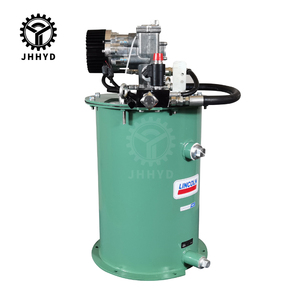
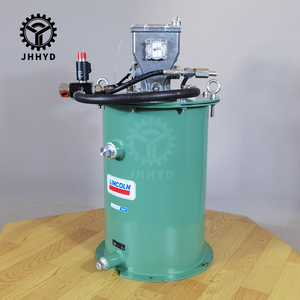
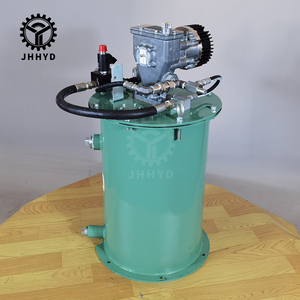
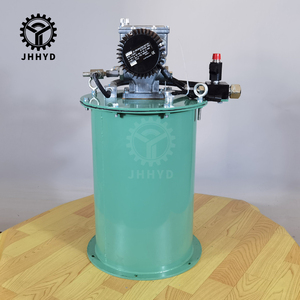

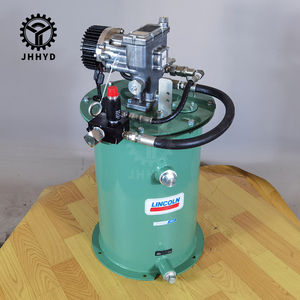






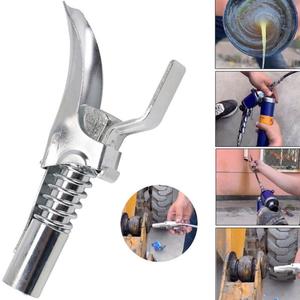



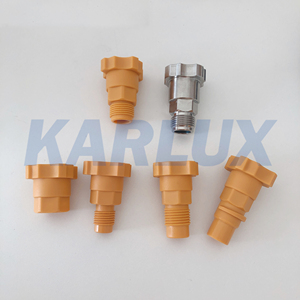

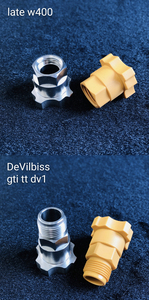


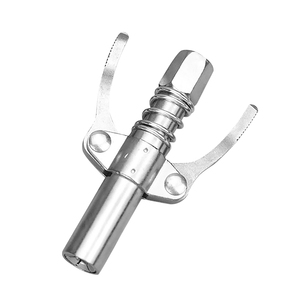






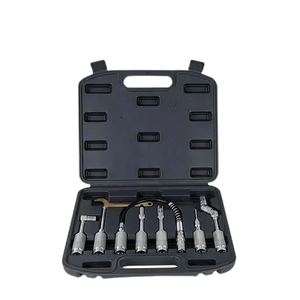


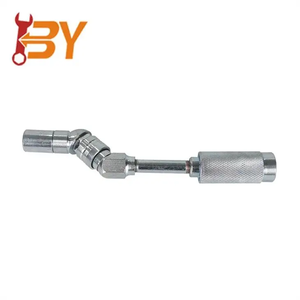
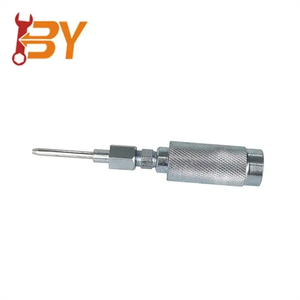
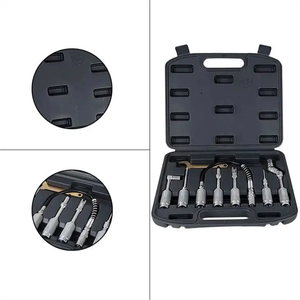









There are several types of grease gun adapters, including:
1. NPT to NPT Grease Adapter
This is the most common type of grease fitting adapter. It is used to connect two pipes or tubes together when they have the same diameter. This adapter is available in various sizes to accommodate different applications.
2. NPT to BSPT Grease Adapter
This grease fitting thread adapter is used to connect an NPT threaded pipe to a BSPT threaded pipe. It is essential in cases where a user is required to connect North American-style piping systems to British piping systems.
3. Coupling Adapter
A coupling adapter is used to connect two grease guns together. This is useful when users need to combine the output of multiple grease guns for higher flow rates or increased pressure. It is manufactured from steel and is therefore resistant to corrosion.
4. Angle Drive Adapter
The angle drive adapter allows the grease gun to apply grease at angles that are hard to reach. This adapter is essential in automotive applications where grease is required in tight spaces.
5. Universal Joint Adapter
This grease gun extension adapter is used to apply grease in a wider range of motion. It can be used in applications where fittings are located on different axes and in positions that are hard to reach.
6. Metric to Imperial Grease Gun Adapter
This grease gun fitting adapter is used to convert metric measurements to imperial measurements and vice versa. For example, a 6mm to 1/8” BSPT female to male adapter can be used to convert a metric grease fitting to imperial specifications. This is useful in applications where users need to mix components from different measurement systems.
Specifications for grease adapters vary by type and application. Here are some common specifications:
Thread Size and Type
Grease gun adapter fittings come in different thread sizes and types to suit various applications. The most common thread sizes include 1/4 inch and 3/8 inch NPT (National Pipe Thread). NPT threads have a tapered design that allows for a tight seal when screwed into a matching female thread. Other thread types that grease gun adapters may have include Metric threads or BSP (British Standard Pipe) threads.
Material
Grease gun adapters are typically made from durable materials like steel or brass. Steel adapters offer high strength and resistance to wear and corrosion, making them suitable for heavy-duty applications. Brass adapters, on the other hand, have good corrosion resistance properties and are often used in applications where moisture or corrosive environments may be present.
Compatibility
Different grease gun adapters are designed to be compatible with specific grease guns and fittings. It is important to ensure that the thread size and type of the adapter match the grease gun and the lubrication point fittings to avoid leaks or improper grease application.
Pressure Rating
Some grease gun adapters may have pressure ratings specified for the maximum grease delivery pressure they can handle. This is particularly important when using high-pressure grease guns that generate significant force when dispensing grease. The pressure rating ensures that the adapter can withstand the grease gun's pressure without failure or leakage.
Finish
Grease gun adapters may come with different surface finishes depending on the manufacturer. Common finishes include chrome plating or zinc coating, which offer corrosion resistance and durability. The finish can also affect the adapter's appearance and compatibility with other coated or plated components.
Maintaining grease gun adapters is crucial to ensure optimal performance and longevity. Here are some important maintenance requirements:
Regular Cleaning
Grease gun adapters should be cleaned regularly to remove accumulated grease, dirt, and debris. This can be done using a soft brush or cloth in conjunction with a suitable cleaning solvent. Regular cleaning prevents the build-up of contaminants, which can affect the adapter's performance and lead to clogging or leaks.
Inspection for Wear and Damage
Grease gun adapter fittings should be periodically inspected for signs of wear, corrosion, or damage. Particular attention should be given to the threaded areas, as these are prone to stripping or wear due to frequent attachment and detachment. If any wear or damage is detected, the affected adapter should be replaced promptly to avoid leaks or improper grease application.
Thread Lubrication
The threaded areas of grease gun adapters should be lightly lubricated with a suitable lubricant to ensure smooth operation and prevent galling or seizing of the threads. Lubrication reduces friction between the mating surfaces and extends the life of the adapter fittings.
Storage
When not in use, grease gun adapters should be stored in a clean, dry place away from moisture and corrosive environments. Adapters should be kept in their original packaging or a suitable storage case to prevent loss or damage. Proper storage prevents corrosion and wear, ensuring that the adapters are in good condition when needed.
It is worth noting that choosing the right grease gun adapter for a particular application is key to ensuring optimal equipment performance and longevity, as well as saving time and costs in the long run. Here are some factors to consider when choosing a grease gun adapter:
First, it is important to consider the compatibility aspect. Which grease gun and what type of fitting or port does one be using? Take time to find out the compatible combinations to avoid damage and inefficiencies. Also, consider the pressure ratings. Depending on the application, some require high-pressure grease guns while others require low-pressure ones. Consider the pressure ratings of the adapters to ensure they can handle the required pressure without failure or leakage.
Durability and material are also important considerations to make. Choose adapters made from high-quality materials that are corrosion-resistant and abrasion-resistant. For instance, stainless steel is a good choice because it offers strength and resistance to rust and corrosion.
Finally, ease of installation is also important. Choose grease gun adapters that are easy to install and require minimal tools or complicated procedures. This will ensure a quick and hassle-free connection, especially when one is working in tight spaces or with multiple applications.
By considering these factors, choosing the right grease gun adapter for a specific application becomes easier, ensuring efficient lubrication, preventing equipment wear, and saving time and costs associated with equipment failure or downtime.
Most grease guns come with a standard 1/4-inch NPT opening. This is where the grease fitting adapter gets screwed into. When users want to switch to a different tip or fitting, the process is usually quite simple. They loosen the existing fitting and remove it from the gun. Then, they clean the threads and apply thread sealant or tape. Finally, they screw in the new fitting and tighten it using a wrench.
When the grease gun adapters wear out, replacing them is quite easy. First, users need to identify the type of adapter they have and the fittings it provides. There are several types, including 90-degree fittings, angled fittings, and more. Each one serves a different purpose. Once they have identified the type, they gather all the necessary tools. These include an adjustable wrench, pliers, thread sealant, and tape.
To replace the grease gun fitting, first, remove the old fitting from the grease gun. Then, clean the threads and apply thread sealant or tape. Finally, screw in the new fitting and tighten it securely using a wrench. Be careful not to over-tighten, as this can lead to damage or leaks. Once the new adapter is in place, users should test it to ensure there are no leaks.
Q1: How do I know what size grease gun adapter to buy?
A1: Selecting the right size of the grease gun adapter is crucial for optimal performance. To determine the appropriate size, users must consider the following: Check the owner's manual or service manual of the equipment or vehicle to be lubricated. This will provide the recommended grease fitting size. Alternatively, measure the existing grease fitting using a caliper. Grease fittings are typically measured in inches or millimeters. Once the size is determined, choose an adapter that matches both the fitting and the grease gun.
Q2: Can I use a single grease gun adapter for multiple applications?
A2: Users can use a single grease gun adapter for multiple applications if the sizes are compatible across different fittings. However, cleaning the adapter thoroughly between uses is essential to prevent cross-contamination of lubricants or greases.
Q3: What is the difference between 1/4 inch and 1/8 inch grease gun adapters?
A3: The primary distinction between the 1/4-inch and 1/8-inch grease gun adapters is their size. The 1/4-inch adapters are designed to fit larger grease fittings commonly found on heavy-duty machinery and trucks. In contrast, the 1/8-inch adapters are smaller and suitable for light-duty applications like bicycles and small equipment. Using the correct adapter size for each application is crucial to ensure a proper fit and prevent leaks.
Q4: Are there any maintenance tips for grease gun adapters?
A4: Yes, maintaining grease gun adapters is essential to ensure their longevity and optimal performance. Here are some tips: Keep the adapters clean and free from grease residue and dirt. Regularly inspect them for wear and tear or damage. Replace any broken or worn-out adapters immediately. Store the adapters in a clean, dry place away from direct sunlight and extreme temperatures.